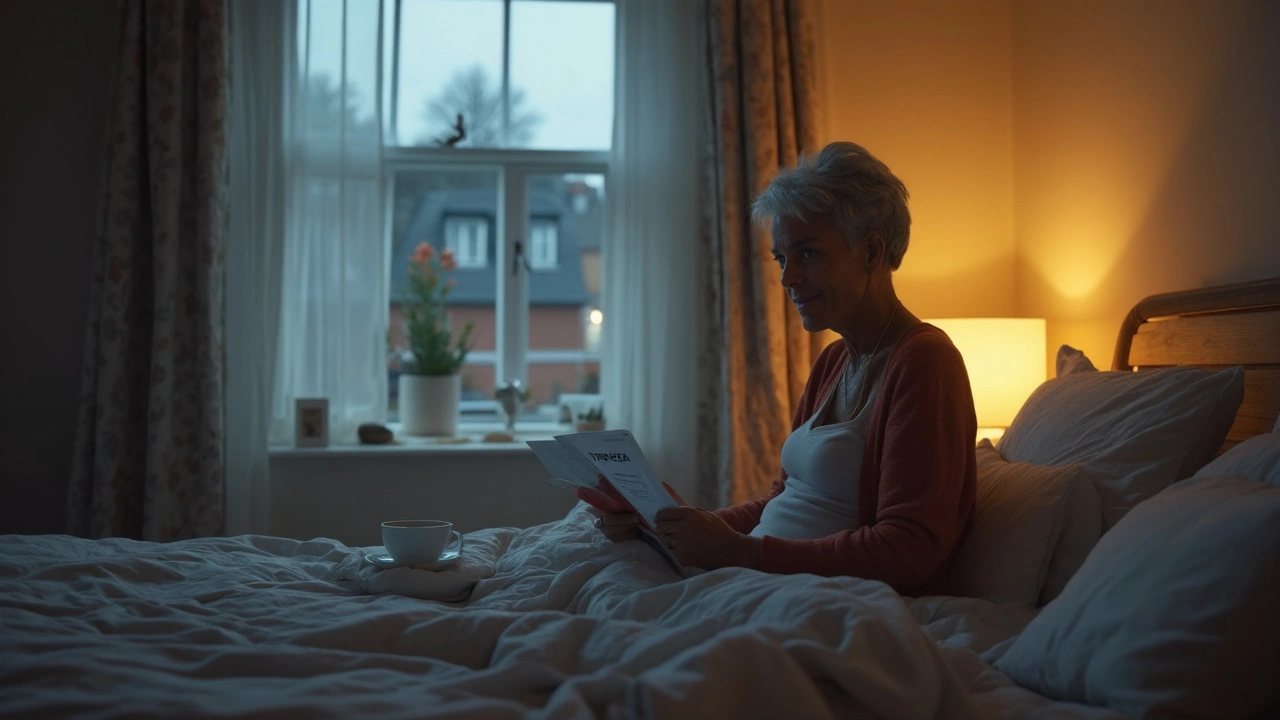If you’ve been told to use hydroxyzine to help you fall asleep, you probably wonder how much is right. Hydroxyzine is an antihistamine that drowses you, making it a popular off‑label sleep aid. Below you’ll get the basics – the numbers you need, when to take it, and what to watch out for.
Doctors usually start adults at 25 mg taken about 30 minutes before bedtime. Some people find that 50 mg works better, but you shouldn’t jump to that dose without checking with your prescriber. The medication comes in 25‑mg tablets, so you can easily split the dose if needed.
For most folks, staying under 100 mg per night is the safe ceiling. Going higher doesn’t usually give you more sleep – it just raises the risk of strong drowsiness the next day, dry mouth, and blurry vision.
Hydroxyzine is sometimes prescribed to children for anxiety or allergic reactions, but using it as a sleep aid in kids is rare. If a pediatrician does recommend it, the dose is based on weight: roughly 0.5 mg per kilogram of body weight, not exceeding 25 mg total.
Older adults may need a lower start – 12.5 mg – because their bodies process drugs slower. Always tell your doctor about liver or kidney issues; those conditions can affect how long hydroxyzine stays in your system.
Now, let’s talk about how to take it right.
Take the tablet with a glass of water, preferably on an empty stomach. Food can slow down absorption and make the sleepy effect take longer. Set a bedtime routine – dim the lights, turn off screens, and take hydroxyzine about 30 minutes before you plan to turn out the lights.
Don’t mix it with alcohol or other sedatives. Combining depressants can cause dangerously low breathing rates and extreme drowsiness. If you’re on other meds like benzodiazepines, antidepressants, or muscle relaxants, ask your pharmacist how they might interact.
Watch for side effects. Common ones are dry mouth, mild headache, and a feeling of “foggy” brain the next morning. If you notice severe dizziness, rapid heartbeat, or trouble breathing, call a doctor right away.
Most people feel a hang‑over‑like grogginess if they take hydroxyzine too early or at too high a dose. If that happens, try moving the dose 15 minutes later or dropping down a tablet size.
Bottom line: start low, go slow, and keep an eye on how you feel the next day. With the right dose – usually 25 mg for most adults – you can get the drowsy edge you need without feeling wrecked in the morning. Always follow your prescriber’s instructions and never adjust the dose on your own. Happy sleeping!

Struggling with night-time itch that wrecks your sleep? This article breaks down hydroxyzine dosage for better sleep, focusing on when to take it, how to avoid grogginess, and how long you can use it safely. You'll get practical, real-world tips based on recent findings and expert insight. We cover side effects, how long hydroxyzine stays in your system, and what to watch for. If you need itch relief at night, discover how to use hydroxyzine effectively for a restful, itch-free sleep.
Read More